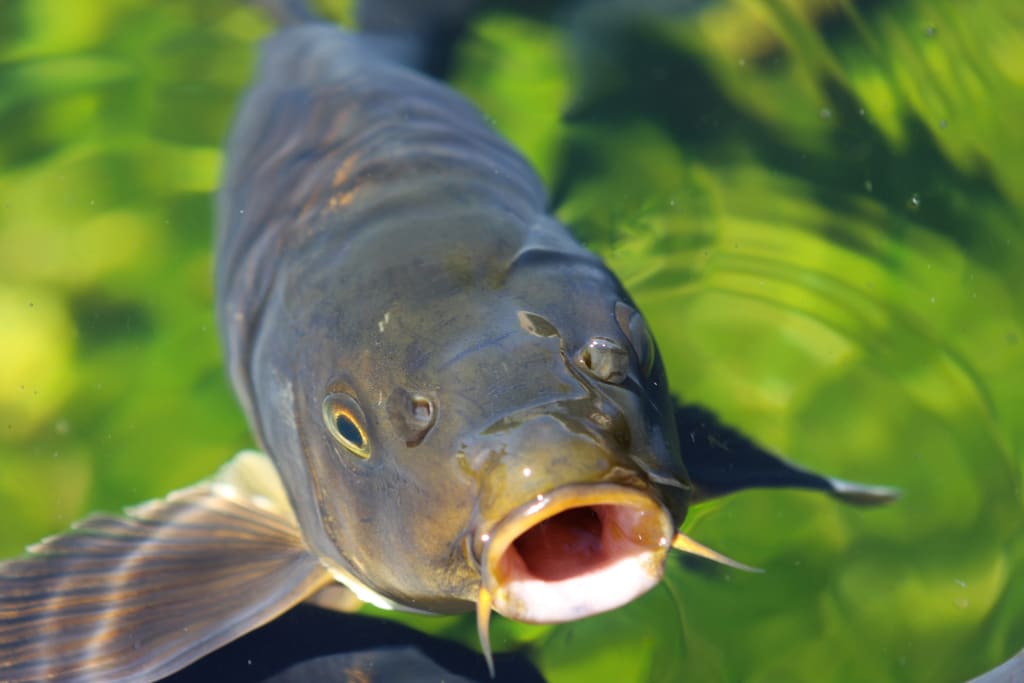How the American Midwest Is Trying to Rebrand the Asian Carp as a Tasty and Healthy Fish
After all, it worked on mudbugs, slimeheads, and toothfish

Asian carp were imported to American waterways in the 1970s to control harmful algae blooms. However, as we know from Jurassic Park, this kind of thing never works out.
The carp escaped the waterways and treatment plants within a decade and quickly spread to the Mississippi River. It didn’t take long before they were in other large rivers like Illinois and Missouri.
Officials are particularly worried about the carp getting into the Great Lakes and outcompeting the native species. Hundreds of millions of dollars have been spent on barriers to prevent the carp from spreading into the world’s largest surface freshwater ecosystem.
One solution officials have found to deal with the carp population problem is to control it by getting it onto people’s dinner plates. But, the invasive Asian carp has a bit of an image problem, and attempts to convince Midwesterners to eat the fish so far have not worked.
The Illinois Department of Natural Resources (IDNR) hopes that could change with a rebranding of the invasive fish’s reputation from that of a dirty bottom feeder to a healthy and tasty fish dinner.
The new name was revealed on June 22, 2022, as Copi. A tweet from the IDNR stated, “When you eat Copi, you’re part of a smart, sustainable solution. Choose Copi. Eat well, do good.”
Can a new name change a reputation?
John Rogner, the assistant director of the Illinois Department of Natural Resources explained to WTTW-TV Chicago, “We’re trying to make the name more attractive, so people will be more inclined to purchase them and have them for table fare, have them for dinner.”
At least it’s not a slimehead
Renaming a fish to something more palatable is not a new thing.
The popular fish, Orange Roughy, used to be called a Pacific Slimehead. Chilean Sea Bass was known as the Patagonian Toothfish. And lobsters were known as mudbugs.
People do not like eating things with strange names. You aren’t going to find a grilled Pacific Slimehead on your menu at your local seafood restaurant.
But calling the same fish a new name, Orange Roughy, changed everything. Roughy became so popular that it was overfished, although conservation efforts seem to be making a difference in recent years.
Asian carp burgers didn’t take off
In 2020, officials launched the “Asian Carp Challenge,” in Illinois which included passing out free Asian carp burgers and tacos across the state.
This attempt didn’t get very far and I have never seen an Asian carp on the menu in Chicagoland. Officials have been trying to get people to change their minds about eating Asian carp for years.
I found a Block Club Chicago article posted on Twitter about a BYOB grilled dinner featuring Asian carp in the city in 2016, and another article from Huffpost from 2014 also encouraging people to eat Asian carp.
Despite these efforts, Asian carp have neither become a popular restaurant item nor sold in grocery stores to prepare at home. Perhaps, like the former slimeheads, a name change can do the trick.
What you may not know about the Asian carp
Carp have a reputation of being dirty, bottom feeders. A fish not many people are excited to eat. But, Asian carp are different than other carp.
They don’t bottom-feed but eat plankton. Lots of plankton. An Asian carp will eat 5 to 10% of its body weight (which can be 100lb) in plankton per day.
Dirk Fucik of Dirk’s Fish and Gourmet Shop, told WTTW-TV Chicago that the Asian carp is “healthier than tilapia. Tilapia is omega-6 instead of omega-3, so you get a lot less benefits of health from tilapia.”
Asian carp have the most omega-3 fatty acids per gram among freshwater fish, similar to the content of salmon. And unlike salmon they swim in freshwater, so you don’t have to worry about mercury.
Would you try an Asian carp by any other name?
We’ll have to wait and see if the rebranding plan is successful. Only time will tell if Midwesterners will take to Copi over carp.
After all, it worked on mudbugs, slimeheads, and toothfish, so perhaps there is hope the Asian carp will become the next Orange Roughy.
Note: a previous version of this article was originally published on NewsBreak.
About the Creator
Jennifer Geer
Writing my life away. Runner/mama/wife/eternal optimist/coffee enthusiast. Masters degree in Psychology.






Comments
There are no comments for this story
Be the first to respond and start the conversation.